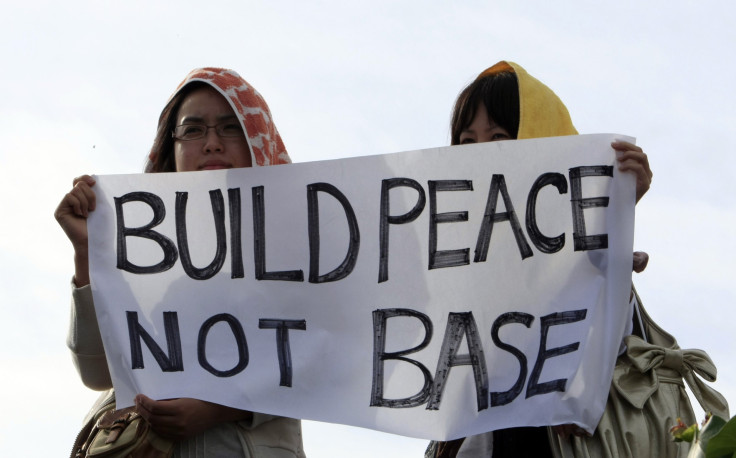US Military In Okinawa To Facilitate Largest Land Return To Japan Since 1972

After a surge in protests against its presence in the region, the United States military announced Friday that it is making preparations for the largest land return in the Japanese island of Okinawa since 1972.
Okinawa hosts 50,000 U.S. nationals, including 30,000 military personnel and civilian contractors, and is an important base to counteract China’s aggressive motives in Asia. However, thousands of protesters staged a massive demonstration last month against the presence of the military bases on the island.
“Our capabilities to operate in the Pacific will remain consistent, even within a smaller space. ... We are respectful of the feelings of Okinawans that our footprint must be reduced,” said Lt. Gen. Lawrence D. Nicholson, the U.S. commander on the island, in a press release. “This decreased training area on Okinawa will not deteriorate our commitment or our ability towards working with the Government of Japan and our partners in the Japan Self Defense Force in mutual defense of this country.”
On the completion of new helipads, the military will return 4,000 hectares (over 15 square miles), which is 17 percent of the total area it controls, to Japan.
The U.S. occupied Okinawa until 1972 and the areas being returned are a part of the U.S. Marine Corps jungle training camp in Northern Okinawa — Camp Gonsalves. The return had been agreed to in 1996 but did not materialize due to protests that delayed the construction of the helipads, which has now resumed.
“As part of the Treaty of Mutual Cooperation and Security between the United States of America and Japan, the U.S. is granted the right to certain exclusive-use facilities for the purpose of the defense of Japan and maintenance of peace and security in the Far East,” Maj. Gen. Charles Chiarotti, U.S. Forces, Japan deputy commander, said in Friday's statement. “Under the treaty, once facilities or areas are no longer necessary to meet those ends, they will be returned to Japanese government. In this case, the construction of several replacement helicopter landing zones to consolidate training within other existing areas will allow the return of almost 4,000 hectares.”
The killing of a local 20-year-old Japanese woman, Rina Shimabukuro, who had been missing for several weeks when her body was found in May, sparked a major outrage in Okinawa. A U.S. contractor, Kenneth Franklin, was arrested in connection with the murder. He is a former Marine.
Okinawa has had a history of local resentment over U.S. military presence following crimes linked to American troops.
In 1996, the U.S. and Japan agreed to relocate a number of troops after the rape of a 12-year-old Japanese schoolgirl by three U.S. military personnel led to mass demonstrations.
In a bid to allay local tensions, Lt. Gen. Nicholson had announced a 30-day curfew, called a “period of unity and mourning,” which was set to last until June 24. The curfew, he said, “will include the postponement of all festivals, celebrations and concerts on our bases and stations.”
The two countries had also agreed to limit certain legal protections and benefits provided to some U.S. civilians working for the military.
© Copyright IBTimes 2024. All rights reserved.





















